Reviewing The Lost Book of Herbal Remedies: Hype, Healing, or Hazard?
We dug deep into the claims, content, and controversies surrounding this popular herbalism guide by Dr. Nicole Apelian to help you decide if it's worth your money and your trust.
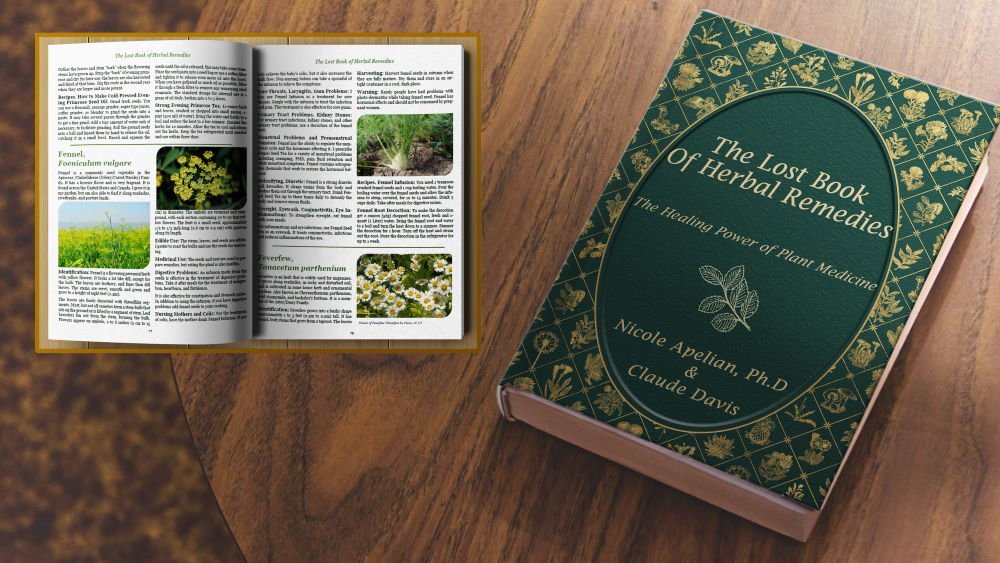
“The Lost Book of Herbal Remedies” has become a phenomenon in natural health circles. The physical book – a 304-page hardcover guide to medicinal plants – promises to restore “forgotten” knowledge about plant medicine and survival skills.
Its marketing emphasizes traditional remedies that supposedly predate modern pharmaceuticals, appealing to homesteaders, preppers, and anyone skeptical of conventional medicine.
But does the book deliver on these bold claims? Or is it another glossy product riding the wave of America’s growing interest in alternative medicine?
This review examines the authors’ credentials, dissects the actual content, weighs the scientific validity of its claims, and compares it against established herbalism texts.
The goal = providing you with enough information to decide whether this book belongs on your shelf or if your money is better spent elsewhere.
The Lost Book of Herbal Remedies Review
The Lost Book Of Herbal Remedies
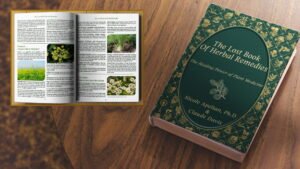
The Lost Book of Herbal Remedies is a must-have for anyone who is serious about its health because it contains essential and vital information about natural healing and health improvement through conventional herbal methods that have been proved to have zero side effects
4.89
Pros
- Comprehensive analysis of over 400 herbs
- Easy to understand
- Detailed guides
- Colored images
Cons
- Available only on official website
Who Are the Authors?
A Closer Look at Dr. Nicole Apelian and Claude Davis:
Dr. Nicole Apelian

Nicole Apelian holds a Ph.D. in anthropology and presents herself as a survival expert and herbalist [5][6]. She gained public recognition through her appearance on the History Channel’s survival series “Alone,” where she lasted 57 days in the wilderness.
Her personal battle with multiple sclerosis drove her deep into herbal medicine research, seeking natural ways to manage her symptoms [2].

The “Dr.” title is legitimate – her doctoral work focused on African studies and human-wildlife interactions. However, it’s anthropology, not botany or pharmacology.
Here’s where things get complicated: In 2020, the Federal Trade Commission (FTC) issued a warning to Apelian’s company, Dr. Nicole Apelian LLC, for making unsubstantiated health claims about products marketed for preventing, treating, or curing COVID-19 [4].
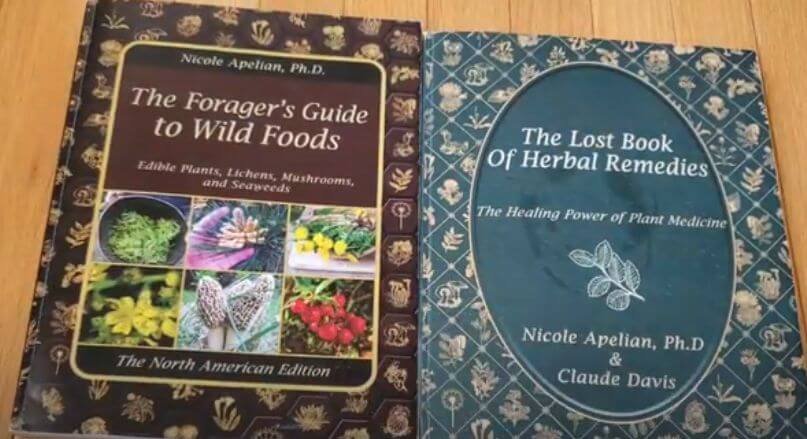
The FTC didn’t prove the claims were false, but the agency demanded scientific evidence that didn’t exist. This raises questions about the rigor Apelian applies to health claims more broadly.
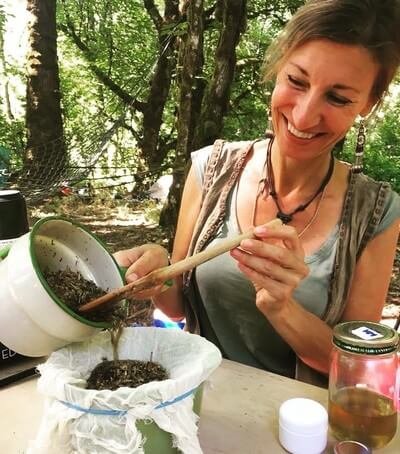
Does this disqualify her knowledge of herbal medicine? Not automatically.
Many herbalists blend traditional knowledge with modern understanding, and her lived experience with MS provides a unique perspective. But it does suggest a pattern of making bold health claims without the scientific backing that medical professionals would require.
[Click Here to Get the Best Price on The Lost Book of Herbal Remedies →]
Claude Davis

Davis describes himself as a “wild west expert” with a passion for traditional remedies passed down through generations [5]. Unlike Apelian, he doesn’t claim academic credentials. His role appears more editorial and historical – he provides context about frontier medicine and American folk remedies.
Finding independent verification of Davis’s expertise proves difficult.
He’s written other survival and self-sufficiency guides, but his background remains largely opaque outside of his own promotional materials. This isn’t inherently suspicious – many traditional knowledge keepers operate outside formal institutions – but it makes independent verification impossible.
The collaboration between an anthropologist-turned-herbalist and a self-taught traditionalist creates an interesting dynamic. But does their combined experience translate into reliable medical information?
What’s Inside “The Lost Book of Herbal Remedies”?
[Click Here to Get the Best Price on The Lost Book of Herbal Remedies →]
Overall Structure
The book organizes its content around individual plant profiles rather than medical conditions, though it includes appendices that cross-reference ailments with relevant herbs [7][8].

The opening sections provide instructions for preparing basic herbal remedies – tinctures, salves, poultices, teas, and infusions [1][3].
This structure works well for plant identification and general knowledge building. You can take the book into the field, identify plants, and learn about their properties on the spot.
The index allows reverse lookup = if you’re dealing with a specific health issue, you can find which plants the authors recommend.
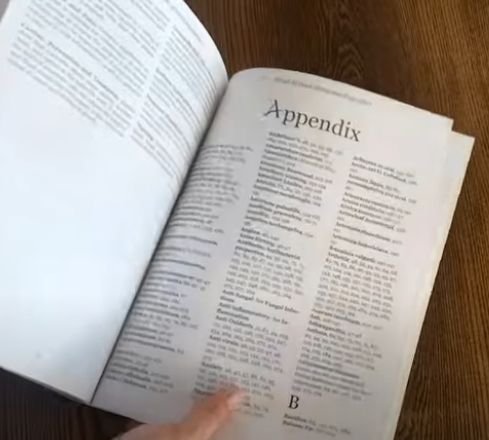
Plant Profiles
Each of the 181 featured plants gets a dedicated profile that typically includes [6]:
- Full-color photographs showing the plant at different growth stages
- Physical identification markers (leaf shape, flower color, stem characteristics)
- Information about edible uses
- Medicinal applications according to traditional use
- Specific recipes or preparation methods
- Historical context about how various cultures used the plant
The photographs are genuinely helpful. Plant identification requires visual accuracy, and the book delivers clear, well-lit images that show distinguishing features. For someone learning to identify wild plants, this visual component has real value.
Remedies and Recipes
The book claims to include over 550 remedies across its plant profiles [5]. These range from simple applications – like using plantain leaves as a poultice for insect bites – to more complex preparations requiring multiple ingredients and specific extraction methods.
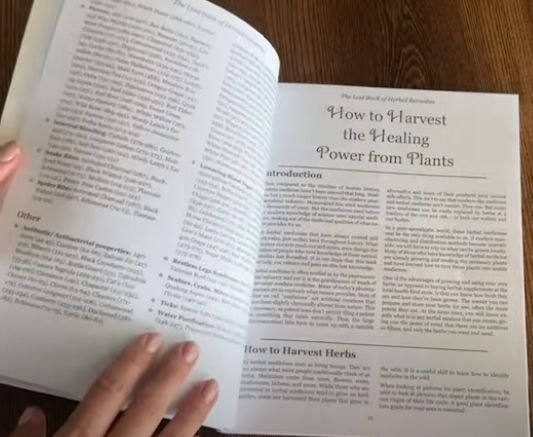
Examples include remedies for pain management, immune support, digestive issues, skin conditions, and respiratory problems [2].
Some are straightforward and align with established herbalism practices. Others make bolder claims that would raise eyebrows in medical circles.
The recipes provide measurements and instructions, though dosage information varies significantly in specificity. Some remedies include precise amounts; others suggest vague quantities like “a handful” or “until the mixture thickens.”
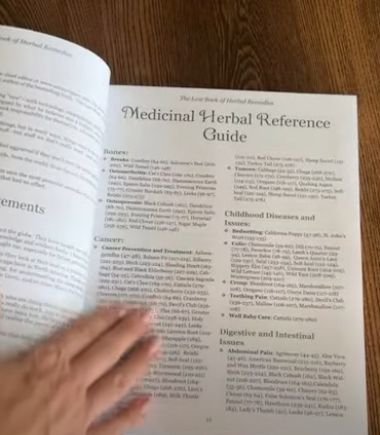
🙂 The Good: What We Liked (Pros)
The book succeeds in several areas that matter to its target audience.
- Accessible Entry Point for Beginners: For someone with zero background in herbalism, the book provides a structured introduction to medicinal plants. It doesn’t assume prior knowledge or drown readers in botanical terminology. The language stays practical and focused on application rather than theory.
- High-Quality Visual Documentation: The color photographs stand out as the book’s strongest feature [1][5]. Each plant appears in clear, well-composed images that show identifying characteristics. This visual approach beats many older herbalism texts that rely on illustrations or small black-and-white photos. When you’re trying to distinguish between a medicinal plant and something toxic, photo quality matters.
- Practical Organization: The dual-index system—browse by plant or search by ailment—adds genuine utility [7]. If you’re suffering from a headache, you can flip directly to remedies rather than reading through 181 plant profiles. This design choice reflects understanding of how people actually use reference books.
- Skills-Based Approach: The sections on preparing different types of herbal preparations teach transferable skills [3]. Once you understand how to make a tincture or a salve, you can apply that knowledge beyond the specific recipes in the book. This educational component has lasting value.
🤔 The Bad: Areas for Concern (Cons)
The book’s weaknesses cluster around scientific rigor and safety.
- No Scientific Sourcing: The book includes no bibliography, no citations, and no references to clinical studies [4]. When the authors claim that a particular plant “boosts immunity” or “reduces inflammation,” they provide no evidence beyond traditional use.
Traditional knowledge has value – humans have used plants medicinally for millennia, and many pharmaceutical drugs originated from plant compounds. But traditional use and scientific validation are different things. The book conflates them.
- Questionable Information and Inaccuracies: Other reviewers have identified specific problems. One analysis flagged the book’s advice about burdock, noting that the information about preparation and use contradicted established herbalism sources [4]. Without the ability to verify claims against scientific literature or established references, readers can’t distinguish between solid information and errors.
- Insufficient Safety Information: Many herbs interact with prescription medications. Some become dangerous during pregnancy. Others cause problems for people with specific medical conditions. The book acknowledges these issues in general terms but fails to provide specific, consistent safety information for each plant [4].
A responsible herbalism guide should include:
- Specific contraindications for each plant
- Known drug interactions
- Appropriate dosage ranges
- Signs of adverse reactions
- When to seek professional medical care
“The Lost Book of Herbal Remedies” addresses these topics inconsistently. Some plant profiles include safety warnings; others skip them entirely. For a book marketing itself to beginners, this represents a damn serious gap.
- Missing Geographical Context: The book rarely specifies where plants actually grow [4]. USDA plant hardiness zones don’t appear. Range maps are absent. A reader in Arizona and a reader in Maine will encounter completely different wild plants, but the book provides no clear guidance about what grows where.
Are These Remedies Truly “Lost”?
The marketing leans heavily on the concept of “lost” or “forgotten” knowledge. The implication = modern medicine has buried effective natural treatments that our ancestors understood.
How accurate is this framing?
Most of the plants in the book remain well-known within herbalism circles. Echinacea, elderberry, calendula, yarrow, dandelion – these aren’t obscure. Walk into any natural foods store and you’ll find products made from them. Herbalism books from the 1970s and earlier cover most of these plants in detail.
“But what about people completely new to herbalism?”
Fair point. To someone raised on conventional medicine with no exposure to plant-based healing, this knowledge might feel lost. The disconnect isn’t that the information disappeared – it’s that many Americans never learned it in the first place.
The genuinely forgotten aspects of plant medicine tend to involve specific preparation methods, seasonal timing, or combinations of plants used by particular cultural groups.
Some of that does appear in the book, particularly in Davis’s historical notes about frontier remedies. But the majority of content covers plants and uses documented in dozens of other contemporary herbalism guides.
The “lost knowledge” angle functions more as marketing copy than accurate historical description.
Does that make the book useless? No – but it does mean the framing oversells the content.
How Does It Compare to Other Herbalism Books?
Context matters. How does this book stack up against established alternatives?
| Feature | The Lost Book of Herbal Remedies | Rosemary Gladstar’s Medicinal Herbs | The Herbal Medicine-Maker’s Handbook |
|---|---|---|---|
| Target Audience | Beginners, survivalists, preppers | Beginners to intermediate herbalists | Intermediate to advanced practitioners |
| Number of Plants | 181 | 33 (in-depth) | 100+ |
| Scientific Sourcing | None | Limited but present | Yes, extensive references |
| Visual Quality | Excellent color photos | Good illustrations and some photos | Moderate photos and diagrams |
| Safety Information | Inconsistent, often vague | Good, includes contraindications | Comprehensive dosage and safety data |
| Preparation Methods | Basic to intermediate | Detailed step-by-step instructions | Advanced techniques with ratios |
| Price Point | $37-47 (varies) | $15-20 | $25-30 |
| Geographical Info | Minimal | Limited | Plant-specific growing information |
- Rosemary Gladstar’s work focuses on fewer plants but goes deeper into each one, with more attention to safety and preparation details. Her background as a practicing herbalist for over 40 years shows in the level of practical detail.
- “The Herbal Medicine-Maker’s Handbook” by James Green takes an academic approach, including botanical names, constituent analysis, and proper dosing calculations. It’s dense reading but provides the scientific grounding that “The Lost Book” lacks.
- Where “The Lost Book of Herbal Remedies” differentiates itself = the sheer number of plants covered and the survival/self-sufficiency angle. If you want a broad survey with an emphasis on plants you might encounter while homesteading or during emergencies, it serves that niche. For rigorous medical reference or detailed instruction, the alternatives offer more value.
(Ed. note: Price comparison reflects typical retail pricing at the time of research and may vary.)
So, Is “The Lost Book of Herbal Remedies” Worth Your Money?
After examining the content, credentials, and context, the answer depends entirely on your goals and expectations.
Who This Book Serves Well:
This book makes sense for absolute beginners who want a broad introduction to medicinal plants with strong visual identification aids.
If you’re homesteading, interested in survival skills, or simply curious about the plants growing in your backyard, the book provides a starting point. The photographs alone offer value for learning plant identification.
Finally – although this may sound a bit funny – it works as a coffee table book that sparks interest in herbalism. The large format and color photos make it approachable for people who find dense herbal texts intimidating.
Who Should Look Elsewhere:
Anyone seeking scientifically validated health information should pass. The lack of citations, inconsistent safety data, and FTC warning about the lead author’s health claims create too many red flags for use as a medical reference.
People dealing with chronic health conditions, taking prescription medications, or pregnant should consult books with comprehensive safety information and ideally work with a trained clinical herbalist. The gaps in “The Lost Book” could lead to dangerous interactions or inappropriate uses.
Advanced herbalists will find most of the content familiar and may be frustrated by the lack of depth on individual plants and preparation methods.
The book occupies a specific niche = conversational introduction to a wide range of medicinal plants with a survival/self-sufficiency slant. It’s not a rigorous medical reference and shouldn’t be treated as one.
Think of it as a gateway text. It might spark genuine interest in herbalism that leads you to more authoritative sources.
It provides enough information to recognize common medicinal plants and understand basic preparation methods. But it shouldn’t be your only resource, and you should fact-check its claims against scientific sources or other established herbalism texts before applying remedies to serious health issues.
The price point – typically $37-47 depending on where you purchase – it’s OK. Not that expensive but neither cheap also.
If you’ve weighed these considerations and decided the book fits your needs, you can find it through the publisher’s website or major online retailers. Just remember, this is an introduction to herbalism, not a substitute for medical care or a definitive reference on plant medicine.
References
- [1] Herbal Academy – “The Lost Book of Herbal Remedies Book Review” – 2024
- [2] The Prepping Guide – “The Lost Book of Herbal Remedies Review” – 2023
- [3] Modern Survival Online – “The Lost Book of Herbal Remedies Review: Is It Worth It?” – 2024
- [4] Science-Based Medicine – “The Lost Book of Herbal Remedies: A Book Review” – 2022
- [5] Official Product Website – “The Lost Book of Herbal Remedies” – 2024
- [6] Mom Prepares – “The Lost Book of Herbal Remedies Review” – 2023
- [7] Plant Abundance – “The Lost Book of Herbal Remedies Review” – 2024
- [8] Survival Sullivan – “The Lost Book of Herbal Remedies Review” – 2023

it is impossible to order this book. i have tried different sites….no deliveries to …canada!!!!!!